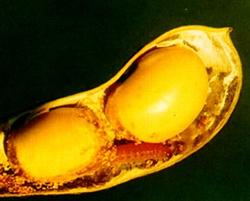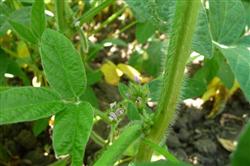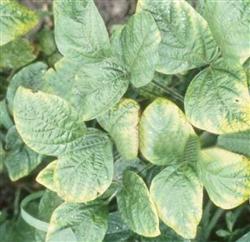Soybean cultivation: what is soybean heart-eating insect? How to prevent and cure

What is a soybean heart borer? How to prevent and cure it? Please introduce the soybean heart borer, also known as the small red worm, which belongs to the family Lepidoptera, commonly known as soybean pod moth. The soybean heart borer larvae are divided into 4 instar, yellowish at the first birth, milky white after peeling into the pods, the body length of the end larvae is 8 mm 10 mm, the mature larvae are red and slightly barrel shaped, and the adults are reddish brown with a body length of 5 mm 6 mm, the male moth is lighter and the female moth is darker. Soybean heart borer mainly harms soybean seeds by larvae. the larvae eat into the pods and eat the beans, the light ones eat into the rabbit's mouth, and the heavy ones can eat more than half of the beans to form a broken petal, and in serious cases, the beans are eaten up. The insect feeding rate in general years is about 10%, and in severe years it can reach 34%-40%, or even more than 80%, resulting in a serious reduction in yield and a decline in soybean quality. Soybean heart borer control methods: 1. Select insect-resistant varieties. 2. Chemical control. In the case of better ridge sealing during the adult outbreak period, 80% dichlorvos EC is used to make poison sticks, inserted every 4 rows, fumigation control; pyrethroid pesticides can also be used for spray control (if 2.5% deltamethrin EC is used at 30ml per mu, 30kg spray with water). The key period for the control of soybean heart borer is before the larvae are eaten into the pods. Click to get more soybean planting technology click to get more grain and oil crop planting technology
- Prev

Soybean cultivation: how to manage the flowering and podding period of soybean?
How to manage the flowering and podding period of soybean? Please introduce the method of soybean flowering and podding period, mainly to strive for more flowers, early flowers, full flowers, and to prevent flowers and pods from falling off and increasing flowers and pods, which is the central task of management in this period. It depends on seedling management, the combination of protection and control, high-yield fields to control mainly, to avoid premature ridge closure, to achieve at the end of flowering.
- Next

Soybean cultivation: what will happen to soybean lack of boron and molybdenum?
What will happen to soybean lack of boron and molybdenum? Please introduce soybean boron deficiency: it will make the leaves green and thicker, shorten the internodes, dwarf and form clusters of leaves. The flower buds turn white or light brown and the tissue is necrotic. In severe cases, burning necrotic spots are formed along the veins of the leaves. Soybean molybdenum deficiency: the interveinal leaf color of the leaf becomes pale and yellowing.
Related
- The first cup of black tea in spring, the flavor and history of tea gardens in Kenya, Africa
- The computer can not only choose potatoes, but also grow tea rice. AI will grow winter oolong tea champion.
- It is not only the inflated tea bitten by insects, but also engraved with the four seasons tea in Beipu.
- The Oriental Beauty Tea Festival in Zhuxian County takes the stage at the weekend to experience the plus-size feast of oil tea.
- & quot; Oriental Beauty Tea & Exploration of Emei in Hsinchu, the hometown of quot;
- The new variety of strawberry "Tainong 1" dessert is the first choice with mellow aroma. Crimson gorgeous
- History of Tea in Taiwan: from Wild Inner Mountain to Export Tea Garden
- Two types of Taiwan Oriental Beauty Black Tea won the British three-Star Award for Childhood Tea Xiang Zhang Jiaqi changed from pilot to champion tea maker.
- Banana species and varieties: the planting history of Taiwan Xianren banana and dwarf banana is long, is banana disease resistant?
- Coffee planting Technology: Qianjie Coffee from Seedling to harvesting

